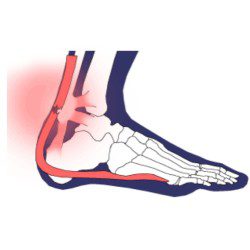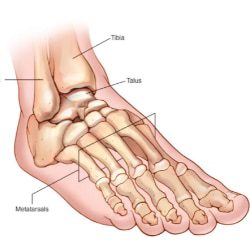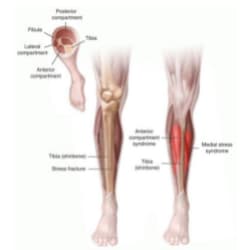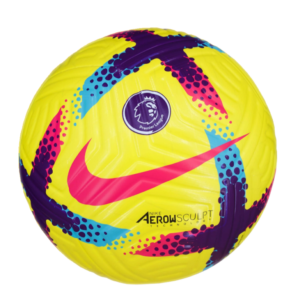
Ankle Sprain
A sprain is a tear or stretch in a ligament, a tissue that connects two or more joints and helps the joints move. An ankle sprain involves one or more ligaments.
The injury may happen after twisting an ankle, making a hard cut, falling to the ground, or overusing a ligament. Those with an ankle sprain may feel a tear or pop in the joint during the injury.
An ankle sprain from football can be mild, moderate, or severe. A severe sprain involves a complete ligament tear, rendering the joint nonfunctional and often causing severe pain. Moderate sprains involve partially torn ligaments and can leave the joint unstable. A mild sprain, on the other hand, will stretch the ligament but leave it intact.
Symptoms of Ankle Sprains
What are common symptoms of ankle sprains? Look out for:
- Bruising
- Pain
- Swelling and inflammation
- Tenderness
- Inability to put weight/pressure on the affected ankle
Recovery Process for Ankle Sprains
Recovery from this football injury is similar to that of other sprains. Doctors recommend using the R.I.C.E. recovery process, which stands for rest, ice, compression, and elevation. Here’s how it works:
Rest
The football player should rest their ankle for at least 24-48 hours without bearing any weight—that means no sports for at least one to two days. If they feel any pain when the ankle bears weight, they should stop; continued use can make the injury worse and delay healing. Time spent off the ankle will depend on the severity of the player’s sprain.
Ice
Put ice on the ankle for 10 to 20 minutes every three to four hours for the first 48 hours after the sprain occurs. You can cover an ice pack with a towel or use a bag of frozen vegetables. You can also submerge the ankle in a bucket of ice and water for the same amount of time. The icing process helps to reduce swelling and pain.
Compression
Wrap the ankle with an elastic medical bandage. This will help decrease swelling associated with the affected limb. Don’t wrap it so tight that it causes circulation issues; numbness, tingling, coolness, and increased pain are signs that it’s too tight. Use the compression bandage for two to three days. If you still feel it’s needed after that, see a doctor or certified athletic trainer.
Elevation
When the player is resting, place their ankle at a higher elevation than their heart. This allows fluid to drain from the ankle area using gravity. You can prop the leg up on a pillow while resting.
Treating an ankle sprain may also include taking ibuprofen or naproxen to reduce swelling and pain, and using crutches to avoid bearing weight on it. If the symptoms continue after a few days, see a doctor to ensure that the ankle is not broken.
How to Prevent Football Ankle Sprains
It’s always a good idea to perform warmup exercises before a football practice or game. Players should also wear the proper footwear for the sport to ensure that their ankles have adequate support. To also help prevent ankle sprains, you can purchase prophylactic ankle braces at a local sporting goods store. A football coach can help athletes with sports injury prevention activities and tips. Athletes who are feeling fatigued should take a break, as it can be easier to become injured when a person moves lethargically due to overexertion.








